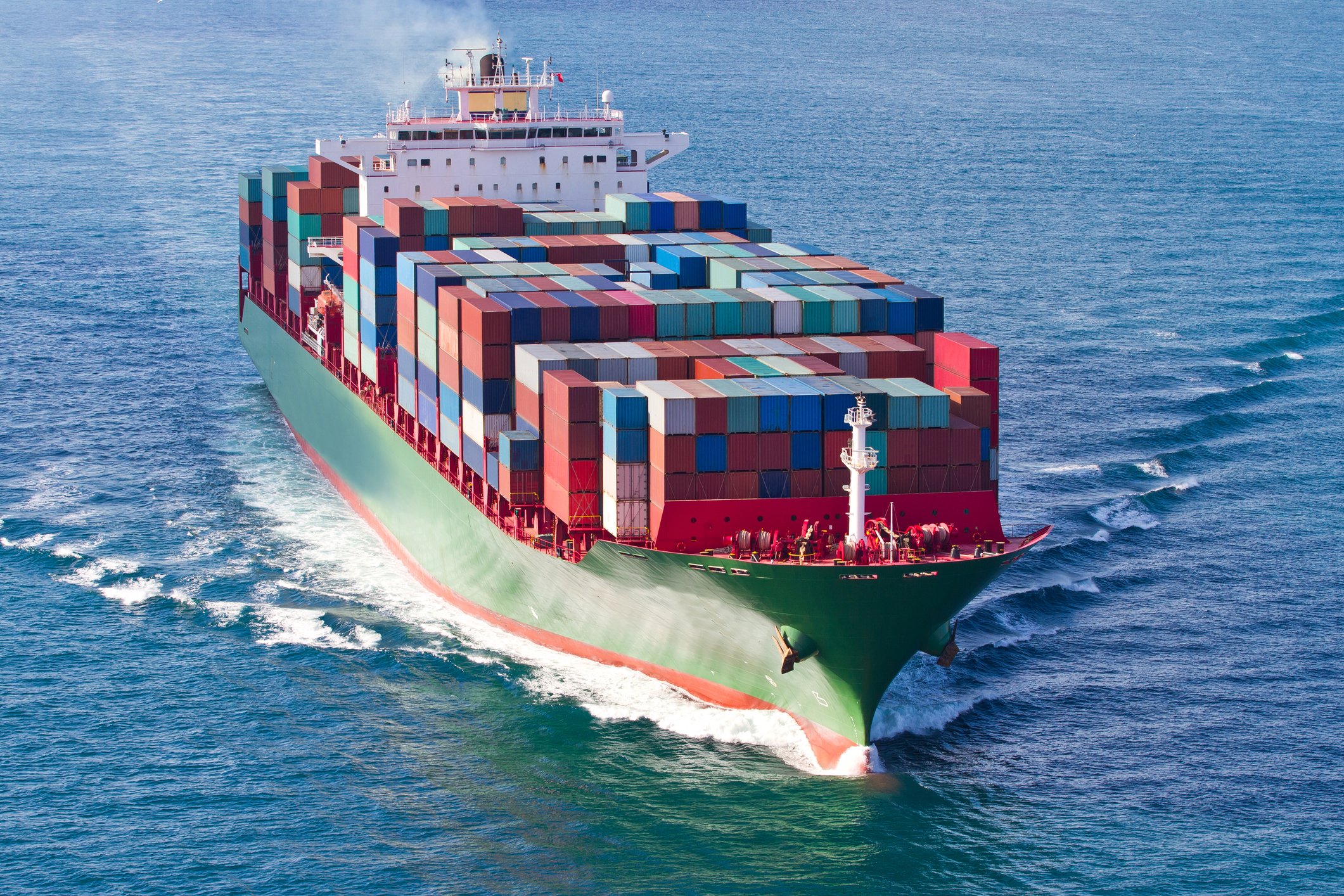The historic bull market currently underway has been kind to many different stocks hailing from across the economy. The global shipping industry has contributed more than a few winners, including Textainer Group Holdings (TGH +0.00%). It owns the second-largest fleet of shipping containers in the world, which it then leases to shipping companies large and small, and its shares are up 157% in the last 12 months.
Management is executing well against a multiyear strategy to return to sustainable profitability, clean up the balance sheet, and deliver value to shareholders. However, investors may think twice about jumping into a new position or adding to an old one. That's especially true after the recent stock performance, the historical volatility in the shipping industry, foundational changes to long-standing ideas about the value of free global trade, and a stock market that is historically expensive.
Is there any indication that Textainer Group Holdings is a buy right now?

Image source: Getty Images.
The business at a glance
Textainer Group Holdings is a $1.1 billion company that owns and manages a global fleet of 3.2 million shipping containers. Most business comes from leasing these assets to shipping companies around the world, although older containers are sometimes taken out of circulation and sold for stationary storage applications. Containers have a useful life of about 13 years. The company's fleet boasts an average age of 7.3 years.
Since 83% of the global containership fleet is controlled by the top 12 shippers, it's important to be on good terms with the leading dozen, although only the largest companies have the scale to deliver. Good news: Textainer Group Holdings generates 80% of its revenue from the top 20 companies in the world.
By the numbers
What's driving the sudden change of fortune for the stock? There are two reasons. First, a supply shortage of available containers. Second, China committed to using only waterborne paints for all new containers produced from April 2017 onward. The move will reduce emissions of volatile organic compounds, or VOCs, from the manufacturing process by nearly 80%. But since these paints take 20 hours to dry, instead of four hours for previously used solvent-based paints, manufacturers have been forced to live with increased costs -- and passed those along to everyone else.
The result of those two compounding factors is that the industry is experiencing the first quarter-over-quarter increase in the average fleet sales price index since mid-2011. Textainer Group Holdings has seen its utilization rate climb to multiyear highs at 96.6% -- and was forced to invest $275 million in new containers in the first half of 2017. New containers fetch the highest lease prices and are in the highest demand, so the company is hoping to generate growing business for the foreseeable future. Will the tailwinds persist?
Wall Street seems to think so. Textainer Group Holdings stock is trading at 21.5 times future earnings, which is notable because it hasn't posted positive EPS in a 12-month period since 2015. The optimistic outlook is based on the fact that container leases agreed to during the historic low points of 2015 and 2016 and are expiring now will have the opportunity to be released at higher daily rates. Given the global shortage of containers, this seems likely.
Management has estimated a few scenarios for increasing rates of releases in the next few years.
- If existing containers in the fleet are released at an average of $0.55 per day between 2018 and 2021, then the company would realize an estimated $46 million in incremental revenue in that four-year span.
- If that daily average is $0.65 in the same period, then the potential incremental revenue opportunity jumps to $149 million.
- If that daily average is $0.75 in the same period, then the potential incremental revenue opportunity jumps to $252 million.
There's also the successful restructuring of debt in the first half of 2017, the fact that Textainer Group Holdings stock is trading at just 0.95 times book value (and valued well below international peers), and expectations to return to GAAP profitability in the second half of 2017 working in the company's favor. Even still, operations may not return to their former glory. Why not?
The company's depreciation and amortization expense has accelerated in recent years as the container fleet has aged. This has eaten larger and larger chunks out of the bottom line, which, when coupled with weak leasing prices in 2015 and 2016, pushed operating income to new lows.
TGH Operating Income (TTM) data by YCharts.
Then again, this may not be a bad thing. Textainer Group Holdings recently adjusted its depreciation policy to increase the expense by about $10 million per quarter. Why? The move lowers the residual value of the company's fleet substantially -- to the lowest in the industry, actually. That means, as older containers are sold, they may fetch selling prices above their residual value on the books, resulting in a gain on the sale.
It may not seem like much, but the aggressive accounting change takes financial pain upfront in an attempt to significantly de-risk future operations. If container prices hold for the foreseeable future -- or simply return to recent five-year averages -- then Textainer Group Holdings may have the easiest time of any of its peers managing the age and growth potential of its fleet.
Is Textainer Group Holdings a buy?
The last two years haven't been pretty for Textainer Group Holdings or its shareholders, but management has deftly handled the factors within its control -- and hasn't been shy about aggressively doing so in the case of its depreciation policy. Although I think there are better stocks in today's expensive stock market, I'd make the case that the $1 billion company is the best positioned in its industry.
However, keep in mind that leasing companies of any kind can stumble under their relatively high debt loads when the global economy cools down. So, while Textainer Group Holdings has the wind at its back today, the medium-term outlook could sour quickly. Nonetheless, I'll give this a thumbs up in Motley Fool CAPS to track its progress.








